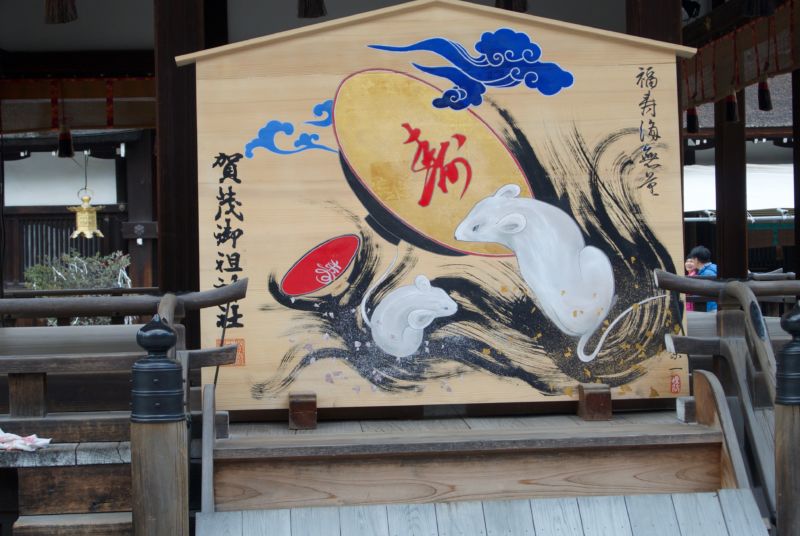
Green Shinto readers will know that we like to keep an eye on new developments at the busy historical shrine of Shimogamo Jinja in Kyoto. It’s a World Heritage site and dependent on tourism for its income. Visitors are attracted not only by its significance in historical terms, but by its recent reputation as Kyoto’s ‘power spot’. In addition, it boasts an ecological connection through its preservation of the Tadasu no mori patch of forest.
The shrine is constantly trying to improve its appeal to visitors, and over the past decades there have been a whole host of innovations and upgrading which have been reported on this website. It was with interest therefore that we went to pay our first respects of the year (hatsumode) and see what novelties the shrine had prepared. In keeping with the tsunami of tourists that have washed over Kyoto in recent years, there was a proliferation of signs in English indicating correct ‘etiquette’. I was surprised though to see at the Honden a stipulation saying ‘No Talking’, since it’s not something that Japanese observe.
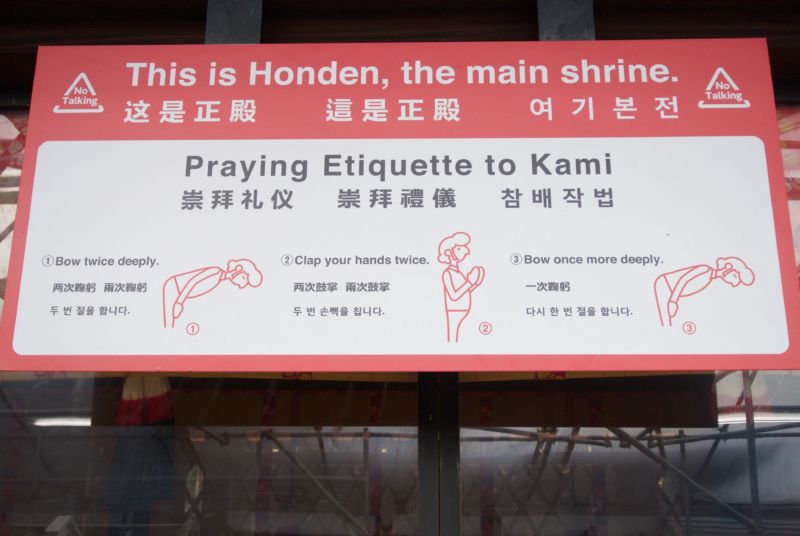
This year around the Maiden (Dance Stage) in the middle of the outer compound a series of 14 paintings and poems had been put up (12 for the Chinese horoscope and two for yatagarasu, the three legged crow associated with the shrine). These were ink illustrations by an artist called Yoshikawa Juichi of verse by the author of Hojoki, Kamo no Chomei (1155-1216), who had once served as priest at the shrine. (As his name indicates, he was a member of the Kamo clan, who founded Shimogamo Shrine in prehistoric times.) Oddly for a New Year celebration, the verses were dark, sad and full of tears. Chomei had failed to win promotion to the position granted his father, and this evidently irked him greatly.
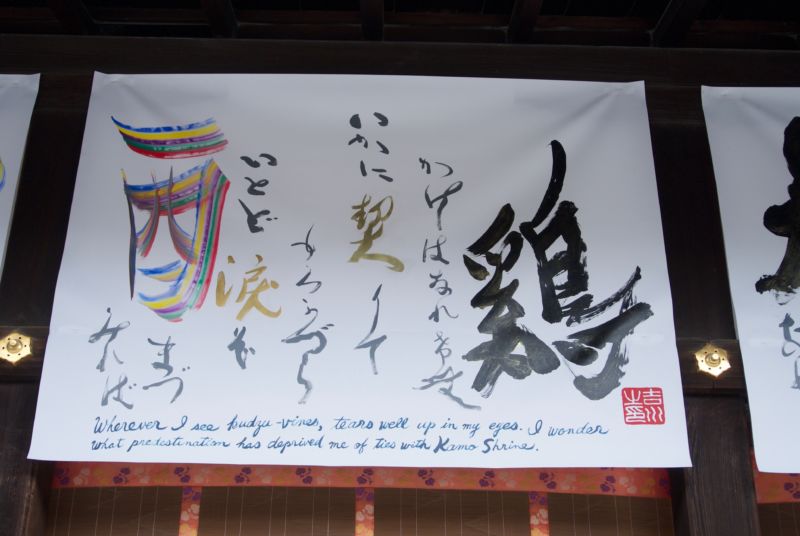
In the main compopund was a call for donations for cypress roof shingles with a graphic illustration of just how expensive traditional roofing is. To fix an area of roof the size of the piece below (20 cm thick), the shrine was asking for a donation of ¥130,000 ($1180). (NB To the left is a sign forbidding drones, an increasingly common intrusion.)
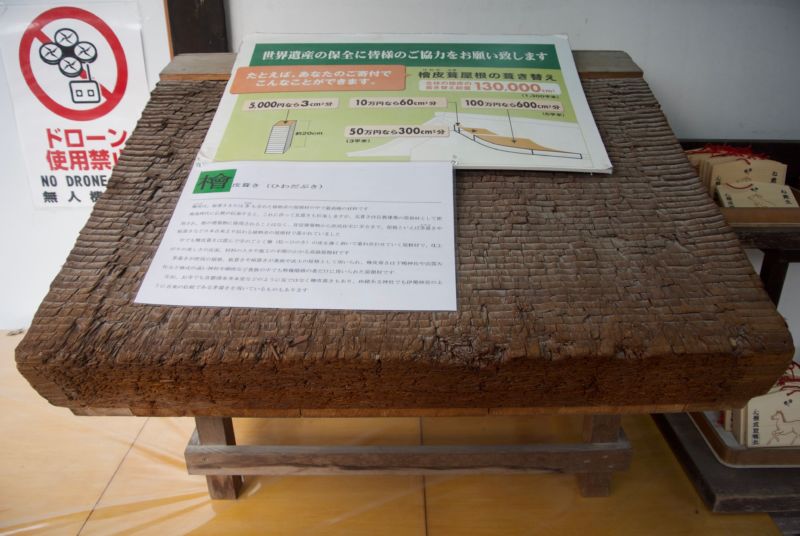
In the Tadasu no mori woods the special subshrine to honour the 35 Saio (imperial princesses appointed to serve at the shrine) had been given a large bilingual noticeboard of information. This stated that veneration of ‘the vestal virgin spirits’ had been planned for a long time, but was only realised in 2015 as part of the 34th rebuilding (shikinen sengu).
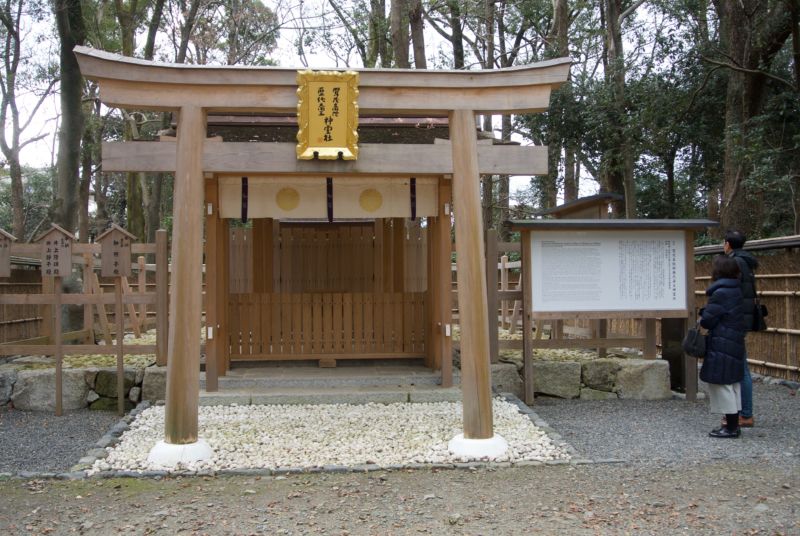
We have reported on the rugby subshrine before, but this year we noticed that a splendid new offertory box had been lovingly made and crafted – in the shape of a rugby ball. This went along with the rugby shaped ema provided by the shrine.
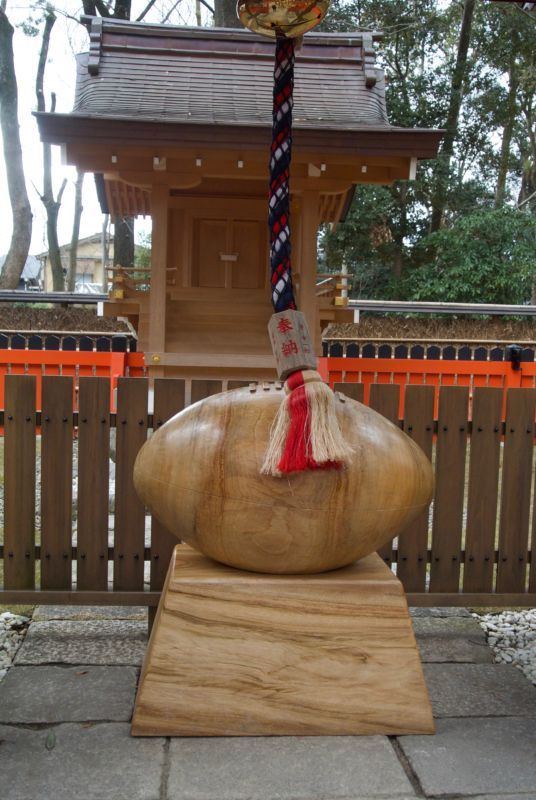
Nearby we were concerned to see yet another new subshrine being prepared – concerned because each of these subshrines eats up a substantial amount of the Tadasu no mori woodland which is a precious part of the shrine’s appeal. (It is supposedly a remnant of the ancient forests that once covered the river basin, though it is evident that the woodland is carefully cultivated.) Every single year it seems another piece of the woodland is lost to new development, and the building of an apartment block on the World Heritage site was merely the most grievous example.
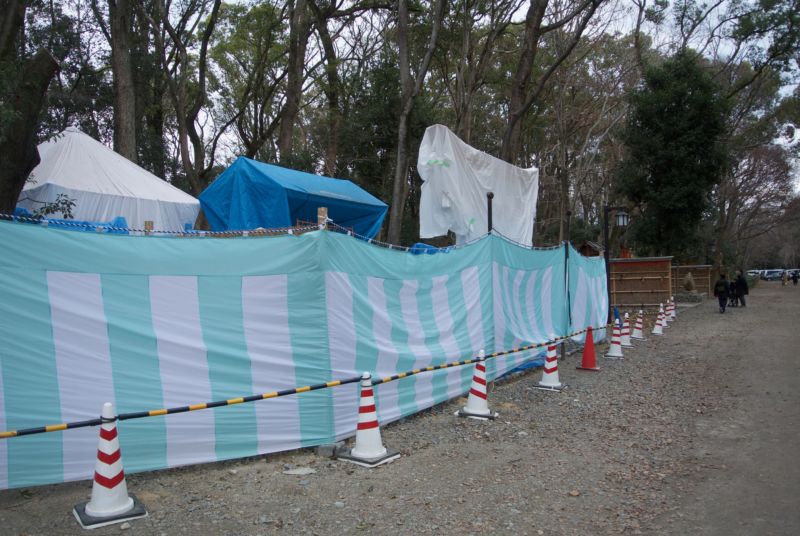
Finally we made a visit to Kawai Jinja, which houses a model of Kamo no Chomei’s hut which features in his famous book, Hojoki. The shrine was promoted some years ago as housing a kami of female beauty, and the number of visitors shot up. Since it was Coming of Age day, the shrine was absolutely packed with young women and room had been made for them to write their ema and prepare pictures of themselves.
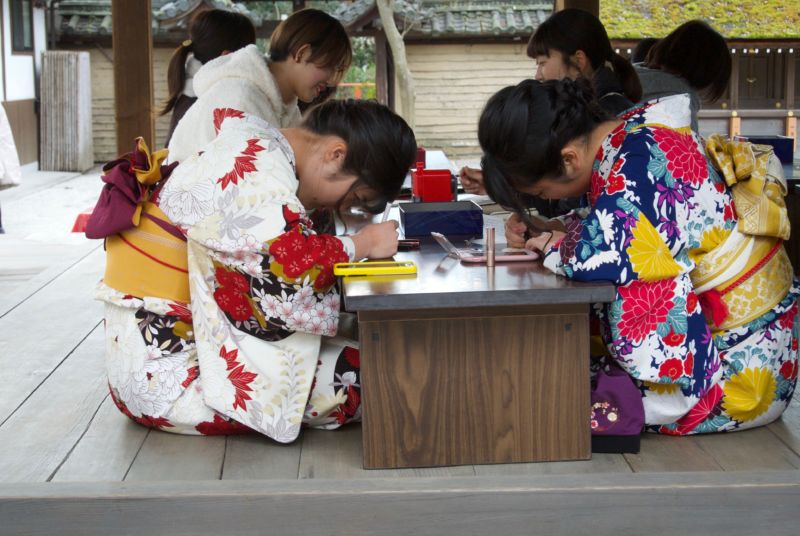
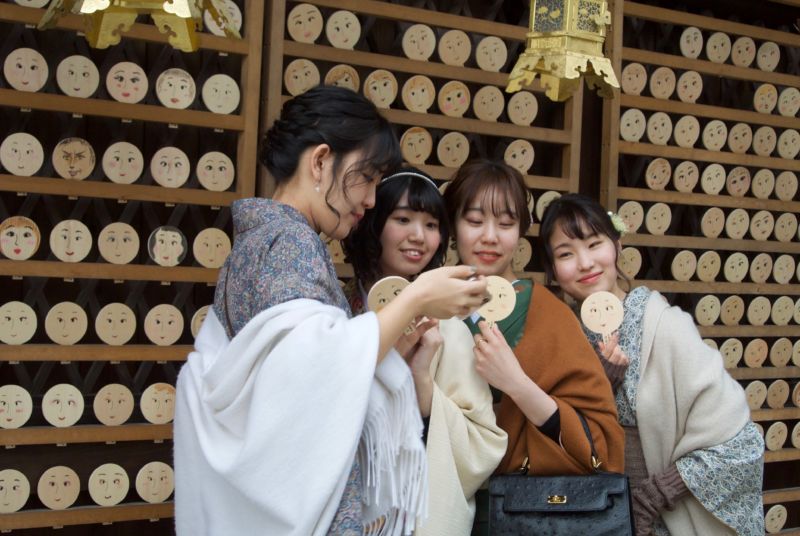
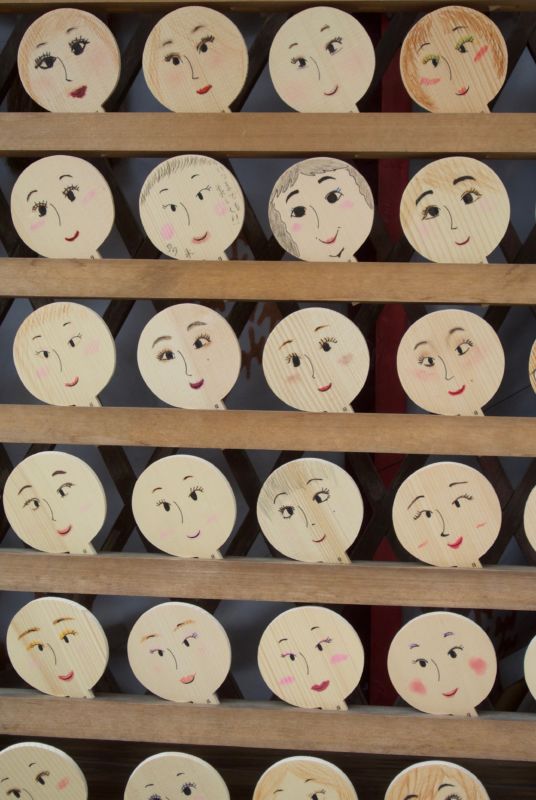
In a corner of Kawai Jinja, unnoticed among the crowds of young females, I found an interesting addition that I had never previously noticed – a military object with prayers for ‘absolute victory’ (hisshou kigan). It seems the weapon may be from the Russo-Japanese War (1904=5), in which the Japanese gained a remarkable victory over one of the great powers and thus joined the front rank of the world’s elite. Where had the weapon come from I wondered? It’s a story I hope to unearth on my next visit…
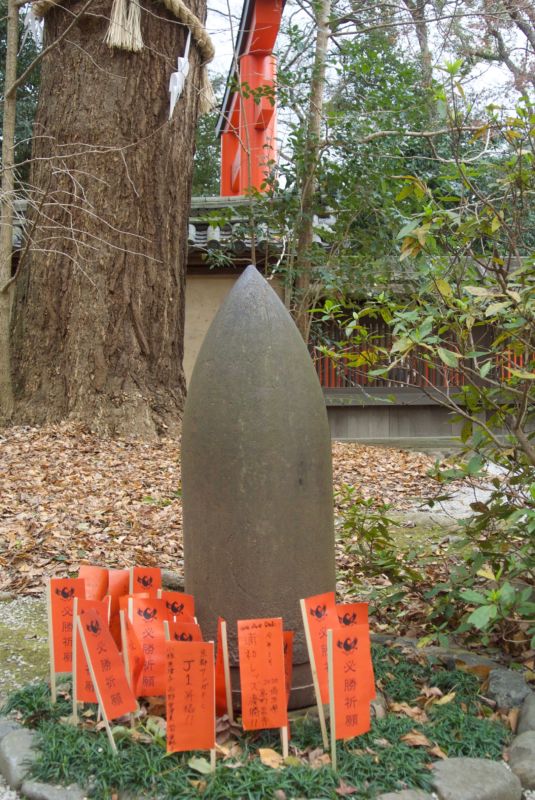
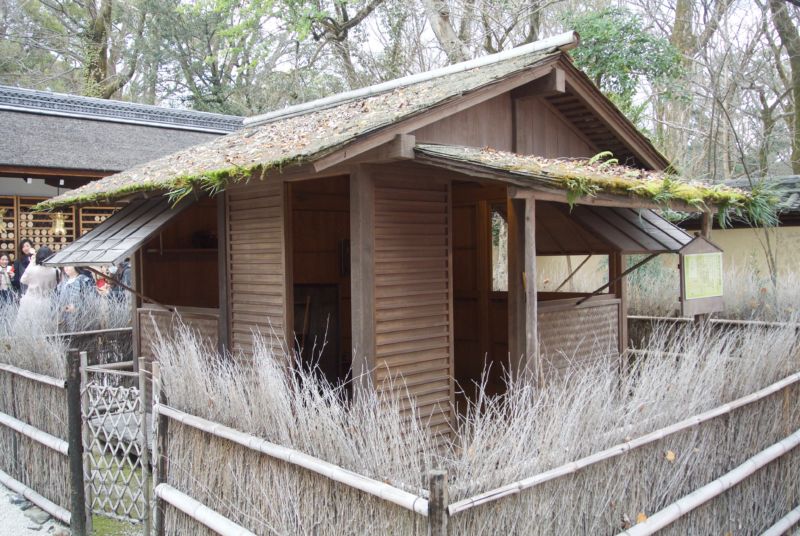
********************
For a previous listing of Shimogamo additions and novelties, please see here. For an account of a New year visit, see here, and for post-New Year activities, see here. For the Mitarashi Festival see here, and for the Mikage Festival click here. For Shimogamo’s main Aoi Festival, see here.

Wonderful for the New Year!
Thanks a lot!
And thank you for the support…